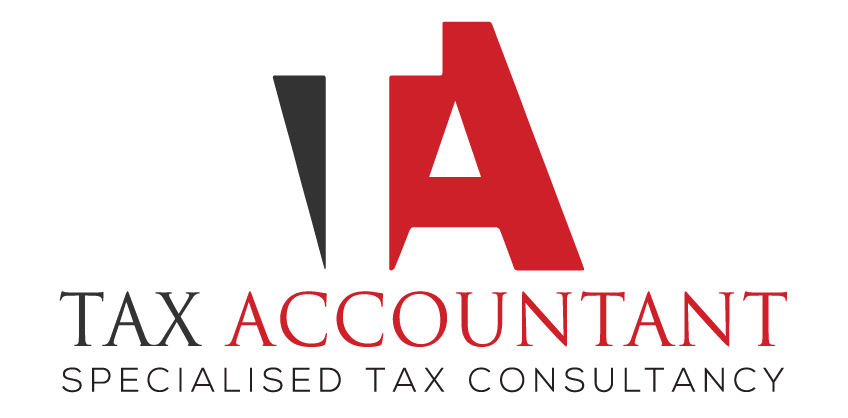In the intricate world of personal finance, one of the most misunderstood debates among British savers revolves around pension contributions versus ISAs (Individual Savings Accounts). Both are tax-efficient vehicles, both can build substantial wealth over time, and both appear equally attractive to the average saver. Yet beneath the surface lies a significant—and often overlooked—difference that can mean losing or saving up to £7,200 in tax relief each year.
Understanding this hidden “tax trap” is crucial, particularly as the end of the tax year approaches on 5 April, when many taxpayers rush to make last-minute financial decisions. Whether you are self-employed, employed, or planning for retirement, knowing how HMRC views pension contributions and ISAs can help you avoid a costly oversight.
1. The Tax Structure: Why the Difference Matters
At first glance, both pensions and ISAs are government-approved savings options with attractive tax incentives. However, the timing and method of tax relief are where they differ dramatically.
-
Pensions provide upfront tax relief. This means that money you would have otherwise paid in tax can instead be invested towards your retirement.
-
ISAs, on the other hand, are tax-free wrappers for savings and investments—your contributions come from after-tax income, but any growth and withdrawals are tax-free.
For a basic-rate taxpayer, pension contributions attract 20% relief at source, while higher-rate taxpayers can claim up to 40% or even 45% relief through their self-assessment return. In contrast, ISAs offer no tax relief on entry, though they avoid taxation later.
So, while ISAs may seem more flexible, pensions often yield greater long-term savings—particularly if you are not optimising your tax relief.
2. The £7,200 Tax Trap Explained
To understand the £7,200 trap, let’s consider a simple example.
Suppose you earn £60,000 per year, placing you in the 40% higher-rate tax band. You decide to save £18,000 annually. If you choose to invest the full amount into a Stocks and Shares ISA, that contribution comes from your post-tax income. You have already paid 40% income tax, so the true pre-tax equivalent of your £18,000 investment is £30,000.
However, had you contributed that same £18,000 into your pension, you would receive 40% tax relief:
-
You pay in £18,000
-
HMRC adds £4,500 (20% basic relief at source)
-
You reclaim another £4,500 via your tax return (higher-rate relief)
That totals £27,000 invested for the same out-of-pocket cost. The difference—£9,000 extra working for your retirement—translates into a £7,200 tax saving after accounting for compound growth and withdrawal factors.
Many savers, especially those focusing on ISAs for liquidity or flexibility, unknowingly sacrifice this benefit every year.
3. The Psychology Behind the Mistake
Most people are drawn to ISAs because they appear simpler and more accessible. You can withdraw money at any time without penalties, unlike pensions, which lock funds until age 55 (rising to 57 in 2028). This flexibility is appealing, especially in uncertain economic times.
Yet this convenience often leads to short-term decision-making. Savers overlook the fact that pensions are designed precisely to maximise long-term compounding power through government incentives. By prioritising liquidity, many end up paying more tax than necessary.
Furthermore, public awareness campaigns about ISAs are more prevalent than those about pension optimisation. The simplicity of “£20,000 tax-free savings” overshadows the more complex but far more rewarding pension relief mechanisms.
4. How Pension Contributions Save More Tax
Pension contributions reduce your taxable income directly, which can have multiple benefits beyond basic relief. These include:
a) Reducing Higher-Rate Liability
For individuals earning between £50,270 and £125,140, pension contributions can pull taxable income below the 40% bracket, effectively reclaiming thousands in overpaid tax.
b) Avoiding the 60% Tax Band
Those earning just above £100,000 face an effective 60% tax rate due to the tapering of the personal allowance. By making pension contributions, they can restore their allowance and save thousands.
c) Boosting Employer Contributions
In workplace pension schemes, employers often match contributions up to a certain limit. This can double the effective return on your money before any investment growth occurs.
d) Inheritance and Lifetime Benefits
Unlike ISA funds, pensions are generally exempt from inheritance tax, and they can be passed down tax-efficiently, especially if the holder dies before age 75.
Each of these points reinforces why pensions, when used correctly, outperform ISAs in pure tax efficiency.
5. The Role of ISAs: Flexibility and Control
That said, ISAs still hold an essential place in a balanced financial plan. Their accessibility, tax-free growth, and no withdrawal penalties make them ideal for:
-
Emergency funds
-
Medium-term goals (property deposits, education, etc.)
-
Supplementing retirement income after pension withdrawals
A well-structured plan often uses ISAs and pensions in tandem. The key is not to view them as rivals, but as complementary tools—each serving a distinct purpose.
6. The Annual Allowances and Pitfalls
The annual pension allowance currently stands at £60,000, or 100% of earnings (whichever is lower). Contributions beyond this may incur a tax charge, negating the benefit of relief. Unused allowance from the previous three years can be carried forward—an excellent opportunity for high earners catching up before 5 April.
ISAs, by contrast, have a flat £20,000 limit per tax year across all ISA types. While simpler, their smaller allowance caps the overall tax benefit.
Failing to use these allowances strategically—especially by neglecting pension contributions—can lead to thousands in lost tax relief annually.
7. How HMRC Rules Have Evolved
Over the past decade, UK tax policy has shifted subtly towards encouraging long-term retirement saving. The government wants more citizens to be self-sufficient in old age, which is why pension relief remains so generous despite calls for reform.
However, there are signs this may not last forever. Proposals to equalise tax relief across income bands or cap lifetime savings could reduce future benefits. Savers who act now, before such reforms take effect, can lock in the current high-value relief structure.
8. Case Study: Two Savers, Two Outcomes
Let’s compare two individuals—both earning £70,000 annually and saving £10,000 per year.
-
Alex invests the full £10,000 in an ISA. Over 20 years, assuming 5% annual growth, Alex accumulates around £330,000.
-
Jamie invests £10,000 in a pension. With 40% tax relief, the total contribution becomes £16,667. After 20 years at the same growth rate, Jamie’s pot exceeds £550,000.
Despite saving the same amount from take-home pay, Jamie ends up £220,000 richer due solely to the tax relief advantage.
That’s the silent power of making the right choice early—and it’s why ignoring pension contributions is one of the most expensive mistakes British savers make.
9. Balancing Pension and ISA Contributions
For most savers, the ideal approach is not either/or, but how much of each.
A general rule of thumb:
-
Use your ISA allowance for short-to-medium-term goals.
-
Use your pension allowance for tax efficiency and long-term wealth building.
If cash flow allows, maxing out both is ideal—but if not, prioritising pension contributions until you’ve claimed full tax relief should come first.
10. Timing Before April 5th: Why Acting Now Matters
The UK tax year ends on 5 April, after which all allowances reset. Contributions made after this date count towards the new tax year. Missing this window means losing the opportunity to claim tax relief or maximise ISA limits.
As the deadline approaches, ensure:
-
Your pension provider has processed your payment before the cut-off.
-
You’ve updated your self-assessment return to claim higher-rate relief.
-
You’ve reviewed employer matching contributions.
-
You’ve checked for carry-forward allowances from previous years.
A brief consultation with a professional tax adviser can ensure these details are optimised.
11. The Expert’s View
According to My Tax Accountant, a leading UK-based advisory firm specialising in personal tax optimisation (visit their site), the majority of savers miss out on easy relief simply because they misunderstand how pensions interact with their tax band.
Their experts emphasise that reclaiming higher-rate relief, avoiding the 60% taper, and using carry-forward allowances can collectively save thousands per year, yet few people take full advantage without professional guidance.
12. Conclusion: Don’t Fall for the £7,200 Trap
When comparing Pension Contributions vs. ISAs, the key lies in understanding when and how tax is applied. While ISAs provide simplicity and liquidity, pensions deliver unmatched tax efficiency and long-term benefits—often amounting to thousands saved or earned in compounded returns.
The £7,200 tax trap is not a myth—it’s the real cost of neglecting pension contributions when they could have reduced your tax bill.
As 5 April approaches, take a proactive step:
-
Review your contributions
-
Check your tax band
-
Consult a qualified accountant
-
Maximise your allowances before the deadline
In the long run, the difference between good planning and last-minute decisions could define the comfort of your retirement.











